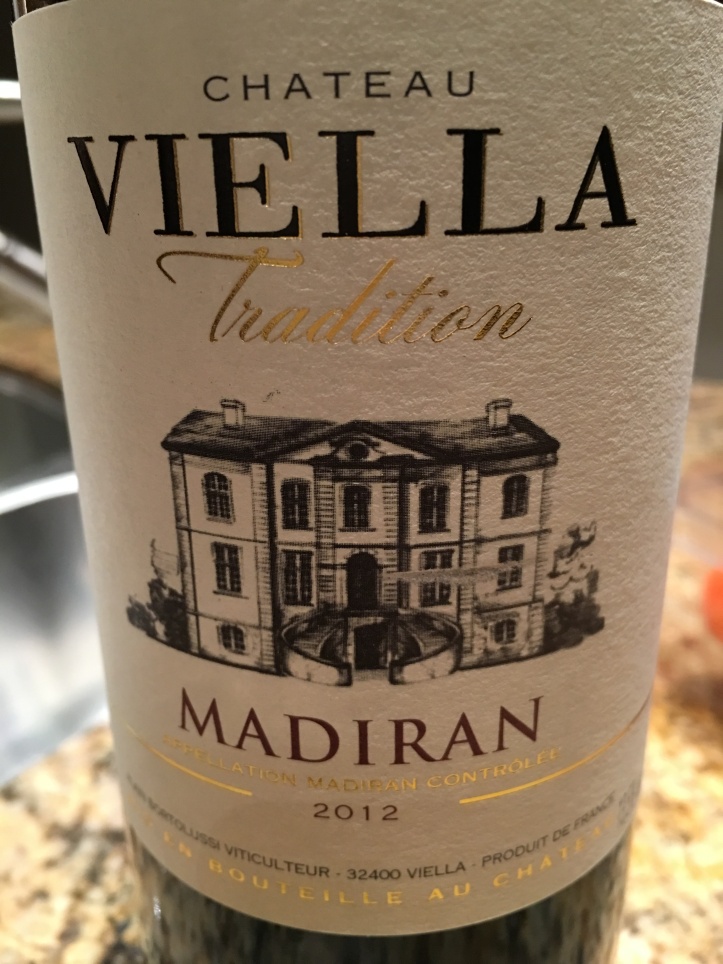
In Stage 19 on Friday, the peloton will get another taste of the Pyrénées Mountains, including the iconic Col d’Aspin, a Category 1 climb leveling off just below 5,000 feet, and the higher, steeper Col du Tourmalet which forces the riders into the vapors at almost 7,000 feet. And that’s just the first half of the race!
The latter part of the day includes a Category 2 climb (pretty hard) leading up to an hors catégorie (beyond category, or ridiculously hard) climb to the Col d’Aubisque, just before the finish. As difficult as the final ascent promises to be, the descent from mountaintop to finish line could be even more treacherous. The riders will charge down narrow roads at frighteningly high speeds, spurred on by dreams of the yellow jersey. The GC contenders will keep close tabs on one another, loath to allow any attacks to succeed. All of this adds up to a few hours of exciting TV for us though, doesn’t it? I know I’m looking forward to it!
Food and Drink
Today’s not a day for teetotalers or vegetarians, as we traipse through Gascogne and the Haute-Pyrénées, the origin of delicacies like foie gras and Armagnac. For the rest of us, however, it is a culinary wonderland.

Pork is celebrated here, especially the highly prized Porc Noir de Bigorre, a black pig native to the region. According to local tradition, they spend their lives grazing freely in the fields and meadows, where they feast upon the acorns and chestnuts that are also specialties of this area. Check out the video below, from Région Midi-Pyrénées, showing how the pigs are raised and cared for. It’s in French, but easy to follow.
In fact, they are raised in a manner quite similar to the famous pigs of Spain’s Jamón de Serrano, who also subsist on a diet of acorns. Their meat is dried and aged for at least 18 months. Like Jamón de Serrano, Porc Noir ham is lightly streaked with succulent and highly flavorful fat that reflects the unique diet of the pigs. It makes a delectable addition to a charcuterie plate or, paired with a mild cheese and strewn over top of a green salad. For additional recipe ideas, visit LeNoirdeBigorre.com.

Now, on to the wine! The next couple of stages will take us through the far reaches of southwestern France, just above the border with Spain. The region, known as Gascogne (or Gascony) is home to some unique wines that you might not have discovered. For red wine lovers, I’m recommending a foray into the area called Madiran. Its wines are based on a grape called Tannat, and they can be quite tannic and intense. But if you’re a fan of Cabernet Sauvignon and the big reds of Napa Valley, this should be an interesting stretch for you.
On a side note, Tannat has found a receptive home in the New World – Uruguay. Winemakers there are producing some very interesting specimens that are well worth searching out. Give it a try with a grilled rib-eye! Click here for more wine-pairing ideas from Madiran.


For you white wine lovers, Madiran has something for you, too. Pacherenc du Vic-Bilh is made from a blend of local grapes (Courbu, Petit Courbu, Gros Manseng, and Petit Manseng,) and can be either sweet or dry. It is similar in style to the wines of Jurançon, which are perhaps better known here in the US. Pacherenc du Vic-Bilh whites tend toward the aromatic, giving off scents of citrus, tropical fruit, white peaches, and apricots. The more complex versions may also exhibit enticing floral aromas, similar to Viognier, the White Queen of the Northern Rhône.
The wine-making tradition of Madiran dates back to the 11th century when Benedictine monks established the Madiran Priory. As they became rooted in the community, the monks began to produce wine, which at first was intended for sacramental use. As their expertise increased, they expanded production to sell to local residents and to those who lived high above in the Pyrénées Mountains. Today, you can visit the priory, enjoying a gourmet meal at one of its restaurants and spending the night in luxury accommodations.

Centuries later, the wines of Madiran were often used to supplement wines produced in other parts of France that frequently lacked sufficient structure or color on their own. Happy to say that in the 21st century, the wines of Madiran stand tall and proud, and have developed quite a following.
While less obscure than they used to be, wines from Madiran and Jurançon have historically been tough to ferret out in the US; but times are changing. A local shop or restaurant with a focus on French wine may have some interesting bottles for you to try. And they are budget-friendly, too. One of the keys to enjoying reasonably priced wine is to explore areas that are new on the radar. It takes a little more work, but it’s worth it!
Enjoy today’s foray into the mountains and, as always, Vive le Tour!
[…] Swirling Dervish continues with her Tour de France-inspired wine and food study as the Tour heads to the Pyranees. That means Tannat from […]
LikeLike
Is there any day on the tour for teetotallers???
LikeLiked by 1 person
Fair point! 😃
LikeLiked by 1 person